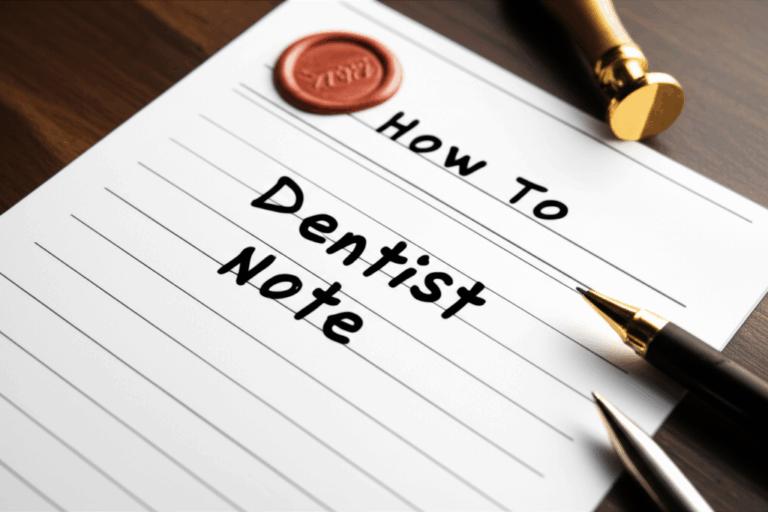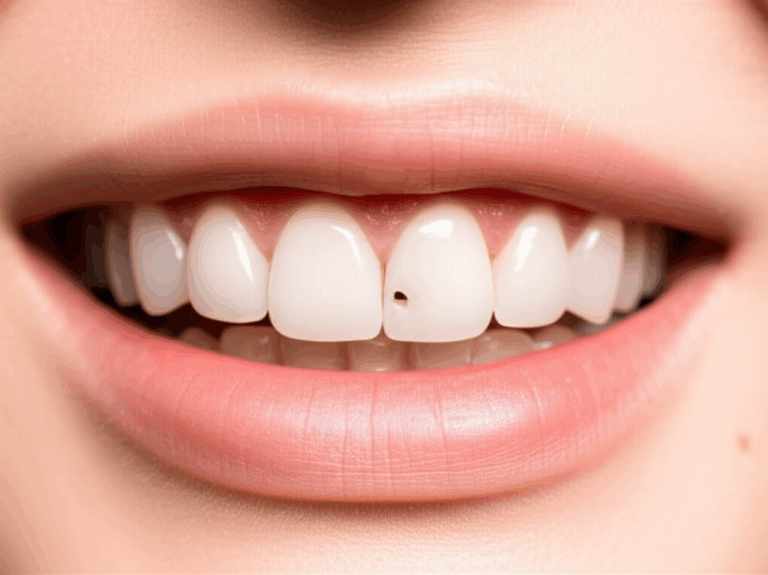
Is Fluoride Treatment at the Dentist Necessary? Understanding Its Role in Oral Health
We’ve all sat in that dental chair and been handed a post-cleaning menu: Would you like a fluoride treatment today? You pause, maybe glance at your wallet, and wonder—Do I really need this? Is a dentist’s fluoride treatment necessary or just another add-on? If you or your child have wondered this, you’re not alone. In fact, you’re asking one of the most common questions in dental care.
Let’s break down what fluoride treatments are, who should get them, what they actually do for your teeth, and how to make the best choice for your oral health. No confusing words, just simple answers.
In This Article
- What Is a Professional Fluoride Treatment?
- The Benefits: Why Dentists Recommend Fluoride
- Who Should Get a Fluoride Treatment?
- At-Home vs. Professional Fluoride: What’s the Difference?
- What Happens During a Fluoride Treatment?
- Is Fluoride Safe? Answering Common Worries
- The Cost Question: Does Insurance Cover It?
- Should YOU Get Fluoride at the Dentist?
- Frequently Asked Questions About Fluoride Treatment
What Is a Professional Fluoride Treatment?
First, let’s clear things up. A professional fluoride treatment is a quick, easy procedure where a hygienist or dentist puts a strong kind of fluoride—way stronger than what you get in toothpaste or mouthwash—right on your teeth. It usually comes as a sticky coating (varnish), a gel, or a foam.
How does it work?
Think of your teeth like a brick wall. Acid from plaque and foods (like sugar and soda) is like a tiny hammer, breaking down those bricks—your tooth enamel. If this goes on, holes (cavities) show up.
Fluoride comes in like really strong glue, patching up those small cracks before they turn into real problems. It helps good stuff like calcium stick to your teeth, making your enamel harder and tougher. In dentist-speak, fluoride helps put minerals back in your teeth (remineralization) and stops the breakdown (demineralization)—basically, it helps stop decay before it gets bad.
Kinds of Professional Fluoride Treatments:
- Fluoride varnish: A sticky coat painted on your teeth that stays for hours and slowly releases fluoride. Good for both kids and adults.
- Fluoride gel or foam: Put in a tray and worn in your mouth for a few minutes.
- Fluoride rinses: Used less often, but still for certain cases.
The Benefits: Why Dentists Recommend Fluoride
Alright, but does this really do anything? Let’s get to the main thing—why your dentist always brings up fluoride.
Powerful Cavity Prevention
Fluoride’s number one use is stopping cavities before they start. This isn’t just a guess—it’s backed up by years and years of research, and the top dental groups like the American Dental Association (ADA), Centers for Disease Control (CDC), and World Health Organization (WHO).
Professional fluoride treatments can lower your chances of cavities by up to 70%, especially if you or your child are more likely to get them. Think of it as a super-strong shield for your teeth.
How it helps:
- Builds a super-tough version of enamel (fluorapatite)—much stronger against acid.
- Can even fix the very start of a cavity by repairing weak areas before you need a filling.
- Fights off bad bacteria that like to cause tooth decay.
Help for Sensitive Teeth
Do your teeth hurt when you eat something cold or sweet? Fluoride can help. It works like a patch, covering up parts of your teeth that are sensitive and calming things down.
Extra Protection for Special Situations
Some people need more help, like:
- People with dry mouth: Saliva helps wash away acid and germs, so if you don’t have enough, your risk for cavities goes way up.
- Gum recession: When gums move away, roots can show, and these areas get cavities easier.
- People with braces: Braces trap food and make teeth harder to clean, so decay is more likely.
- Lots of sugar or acidic foods: These feed bacteria and increase risk.
- Medical issues: Things like diabetes or cancer treatments can make it easier to get cavities.
Proof that Fluoride Works
Here’s some research:
- Cochrane Review: Fluoride varnish cuts cavities in baby teeth by 37% and in adult teeth by 43% for kids.
- For adults, pro fluoride varnish or gel lowers new cavities by about 26%.
- Adding fluoride to tap water has cut tooth decay by over 35% in kids. But everyone’s own risk still counts!
Who Should Get a Fluoride Treatment?
Dentists don’t just offer fluoride for no reason. Here’s who really needs it, and who might not.
Good Candidates: Who Gets the Most Benefit?
Children and Teenagers:
- Their adult teeth are still growing, so they really benefit from fluoride.
- Often have higher cavity risk because brushing isn’t always perfect and they snack a lot.
- The ADA and CDC both say regular fluoride matters most for kids and teens.
Adults with More Cavity Risk:
- Lots of cavities in the past.
- Root surfaces showing (from age or gum problems).
- Dry mouth (from medicine or being sick).
- Gum problems.
- Braces or retainers.
- Crowns, bridges, or other dental work.
- Eat a lot of sugar or acid, or don’t clean teeth well.
- Medical issues: Anything that increases your risk for cavities.
Seniors:
Older adults can have dry mouth, gums that shrink, and roots showing, so they’re more at risk.
When Might You Not Need It?
If you:
- Hardly ever get cavities (no history, healthy mouth, low sugar).
- Drink water with fluoride and use fluoride toothpaste often.
- Brush and floss well and see your dentist regularly.
In short?
Fluoride treatments aren’t needed for everyone, every time. Your dentist should look at your own risk and only suggest fluoride if it will really help you.
At-Home vs. Professional Fluoride: What’s the Difference?
Isn’t toothpaste enough? Why pay for an “extra” treatment?
What Makes Them Different
- How strong: Dental office treatments have way more fluoride than things you can buy at the store—sometimes 10x as much.
- How it’s put on: The dentist or hygienist puts it right on your teeth, so every area gets it and the right amount is used.
- How long it lasts: Varnish lets out fluoride for hours. Brushing or rinsing at home is quick.
- How steady it is: At-home stuff helps keep your enamel in good shape, but can’t give the same strong defense as pro treatments.
Where At-Home Stuff Helps
Always brush two times a day with fluoride toothpaste and maybe a fluoride rinse. This keeps your teeth safe between cleanings. For higher risk, your dentist can give you stronger toothpaste or more in-office treatments.
Clearing Up Myths
Some think if they brush well or use special toothpaste, they don’t need pro fluoride. While daily care matters, it might not be enough for people with higher risk. For the best defense, use both home and professional fluoride.
What Happens During a Fluoride Treatment?
If you’ve never had one (or don’t remember), here’s what happens—so there are no surprises.
Step by Step
How Often Should You Get It?
No one-size-fits-all. Here’s what guidelines suggest:
- Low-risk adults: Once a year or less.
- Kids, teens, or higher-risk adults: Every 3–6 months.
Your own plan should be set with your dentist. For those with lots of cavities or dry mouth, fluoride might be needed every visit.
Is Fluoride Safe? Answering Common Worries
It’s normal to wonder. After all, fluoride comes up in health debates a lot. Is it really safe for kids and adults?
The Safety Facts for Professional Fluoride
- Studied a lot: Years of research and support from the ADA, CDC, and WHO.
- Very little risk: When used right, dentist-applied fluoride is safe for almost everyone.
- Low risk for fluorosis: This means little white marks on kids’ teeth from too much fluoride. In the dentist’s office, doses are controlled, and this problem is rare unless a child swallows a lot of fluoride at home.
- No proof of other health problems: Swallowing huge amounts can be bad, but dental office use means you’re not really swallowing much.
Special Times
- Pregnancy/Breastfeeding: Topical use is safe when done by a pro.
- Babies/Young Kids: ADA guidelines give just the right amount; your dentist will adjust the dose.
- Health conditions: If you have thyroid issues, a rare allergy, or other health concerns, talk to your dentist. Almost everyone can use fluoride safely.
Get the Facts Straight
Scary news stories pop up, but professional fluoride is one of the most tested dental treatments anywhere—and it works well. For more on dental treatments in special groups, see our patient dental section.
The Cost Question: Does Insurance Cover It?
Let’s be real—sometimes it’s about the cost.
How Much Does It Cost?
Price changes by where you live and your office, but usually it’s $20–$50 each visit if you pay yourself.
Insurance Coverage
- Most times 100% covered for kids and teens—many plans call it basic care up to age 18.
- Adults: Some plans now cover fluoride for adults at higher risk; most do not, so check your plan.
- No insurance? You may still find it worth it, since it can save you hundreds or thousands by stopping new decay and extra dental work.
Real Savings
Stopping just one cavity can save hundreds—or even thousands—over time (especially if a small filling turns into a root canal or crown). A quick fluoride treatment now could mean you avoid big dental bills later.
Want to know more about dental crowns and bridges? Check out what a crown and bridge lab does for long-term dental repairs.
Should YOU Get Fluoride at the Dentist?
Here’s what we’ve learned, plain and simple:
- Professional fluoride treatments are safe, quick, and work well.
- They are a big deal for people more likely to get cavities—like kids, teens, adults with dry mouth, gum recession, braces, crowns, lots of fillings, or a history of cavities.
- If you’re low risk, use fluoridated water, and take great care of your teeth, you may not need it every visit. Talk it over with your dentist.
- Doing things to prevent problems now saves your teeth (and money) later.
Easy Steps to Take Now
- Brush two times a day with fluoride toothpaste.
- Floss every day.
- Ask your dentist about your own risk and if you need fluoride.
- If you have questions about insurance, call ahead.
- Don’t believe scary rumors—trust real facts and research.
For more on at-home and professional solutions, our dental practical guide goes into more detail.
Frequently Asked Questions About Fluoride Treatment
How long do I have to wait before eating after treatment?
Most of the time, at least 30–60 minutes. If you had varnish, your dentist may say wait up to 4 hours. Always follow their tips.
Can I get too much fluoride?
It’s rare, especially if you use things as told. Most cases of getting too much (fluorosis) come from kids swallowing toothpaste or tablets at home, not from dentist treatments.
Do adults actually need this, or just kids?
More adults do need fluoride now because of dry mouth, gum recession, and more dental repairs. If you’re higher risk, it helps you too.
I use special (prescription) fluoride toothpaste—do I still need in-office treatments?
Yes, especially if you get cavities a lot or have roots showing—using both home and dentist fluoride works best.
Are there choices if I don’t want fluoride?
Other treatments, like sealants or products with calcium phosphate, are coming up but haven’t been studied as much as fluoride. Talk to your dentist about what’s right for you.
Let’s Recap—The Main Points
- Fluoride is a proven, trusted way to stop cavities.
- Dentist treatments make sense for people with higher or medium risk at any age.
- For low-risk people, talk to your dentist if you need it.
- It’s safe, quick, and saves money over time.
- Good, fact-based dental care starts by asking questions.
Your future smile depends on choices you make now. So, trust the facts and have a good talk with your dentist. If you want to learn more about dental materials or lab work, find out from a china dental lab or a dental ceramics lab—combining science and skill for strong, lasting dental repairs. Remember, getting your best oral health is always a group effort.
To a stronger, healthier smile—you’ve got this.








